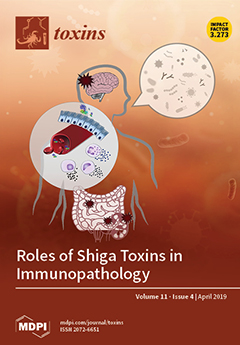The dinoflagellate
Alexandrium minutum (
A. minutum) which can produce paralytic shellfish toxins (PSTs) is often used as a model to study the migration, biotransformation, accumulation, and removal of PSTs. However, the mechanism is still unclear. To provide a new tool for
[...] Read more.
The dinoflagellate
Alexandrium minutum (
A. minutum) which can produce paralytic shellfish toxins (PSTs) is often used as a model to study the migration, biotransformation, accumulation, and removal of PSTs. However, the mechanism is still unclear. To provide a new tool for related studies, we tried to label PSTs metabolically with
15N stable isotope to obtain
15N-PSTs instead of original
14N, which could be treated as biomarker on PSTs metabolism. We then cultured the
A. minutum AGY-H46 which produces toxins GTX1-4 in f/2 medium of different
15N/P concentrations. The
15N-PSTs’ toxicity and toxin profile were detected. Meanwhile, the
15N labeling abundance and
15N atom number of
15N-PSTs were identified. The
14N of PSTs produced by
A. minutum can be successfully replaced by
15N, and the f/2 medium of standard
15N/P concentration was the best choice in terms of the species’ growth, PST profile,
15N labeling result and experiment cost. After many (>15) generations, the
15N abundance in PSTs extract reached 82.36%, and the
15N atom number introduced into GTX1-4 might be 4–6. This paper innovatively provided the initial evidence that
15N isotope application of labeling PSTs in
A. minutum is feasible. The
15N-PSTs as biomarker can be applied and provide further information on PSTs metabolism.
Full article






